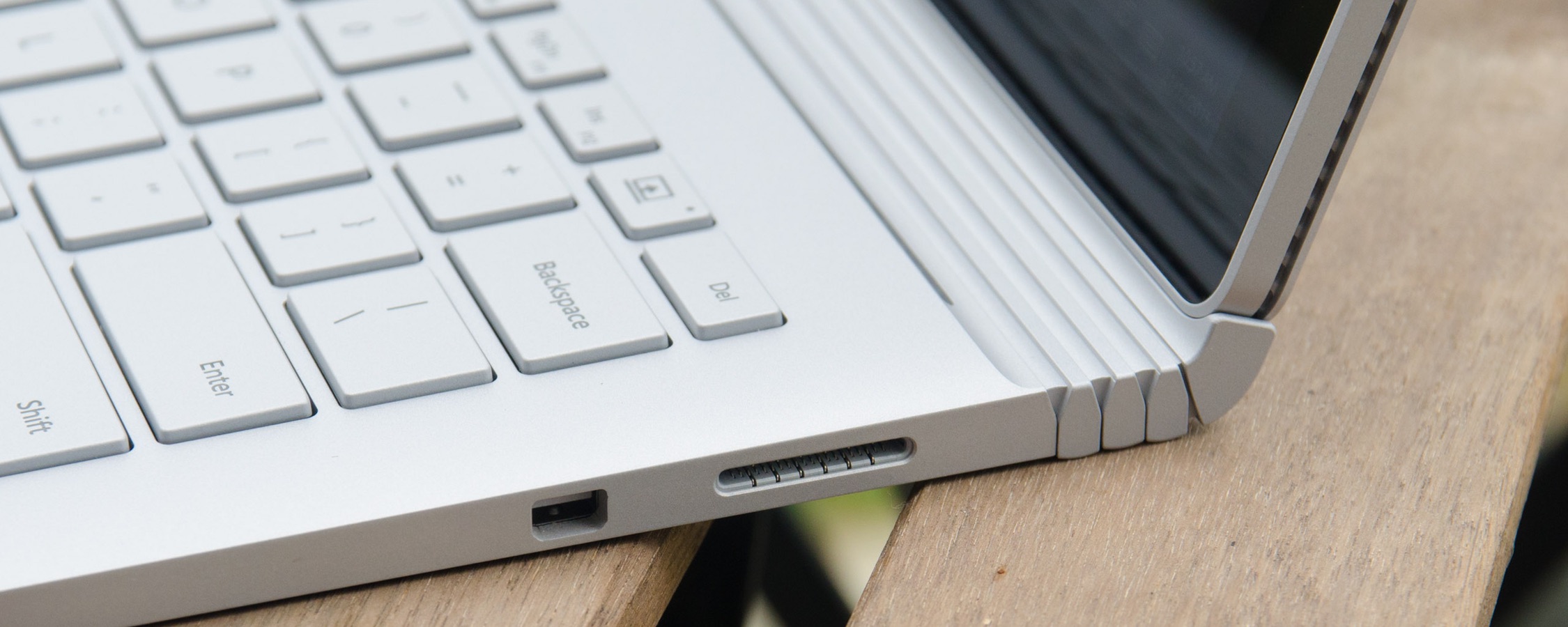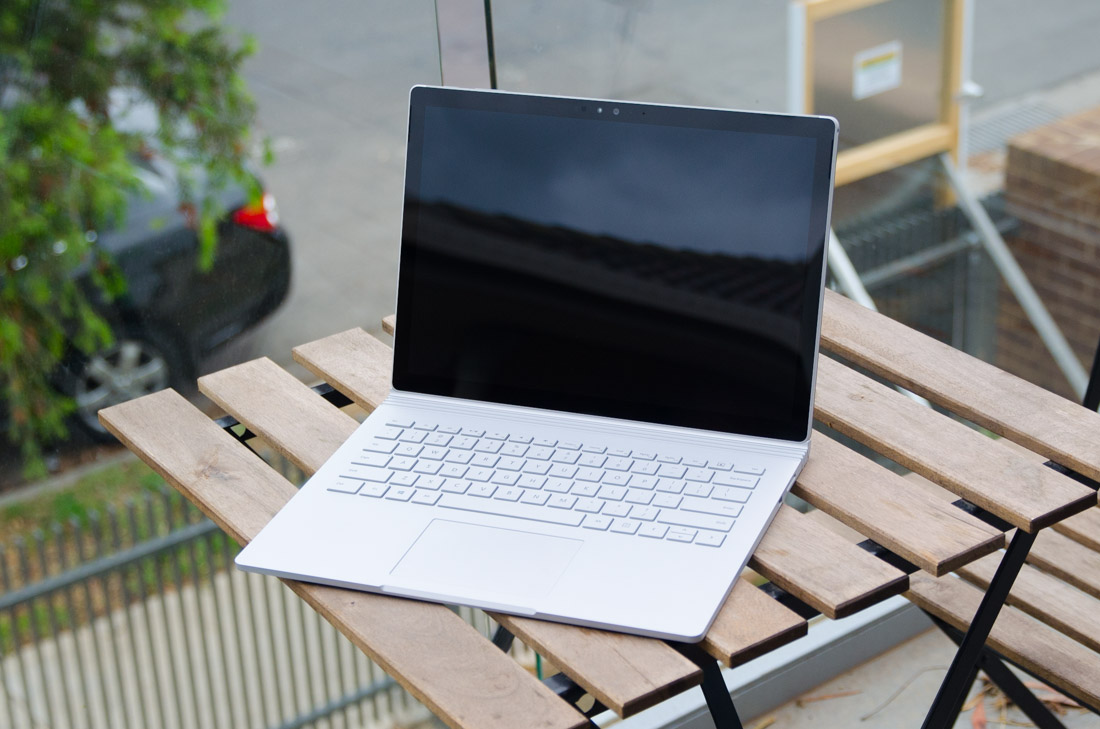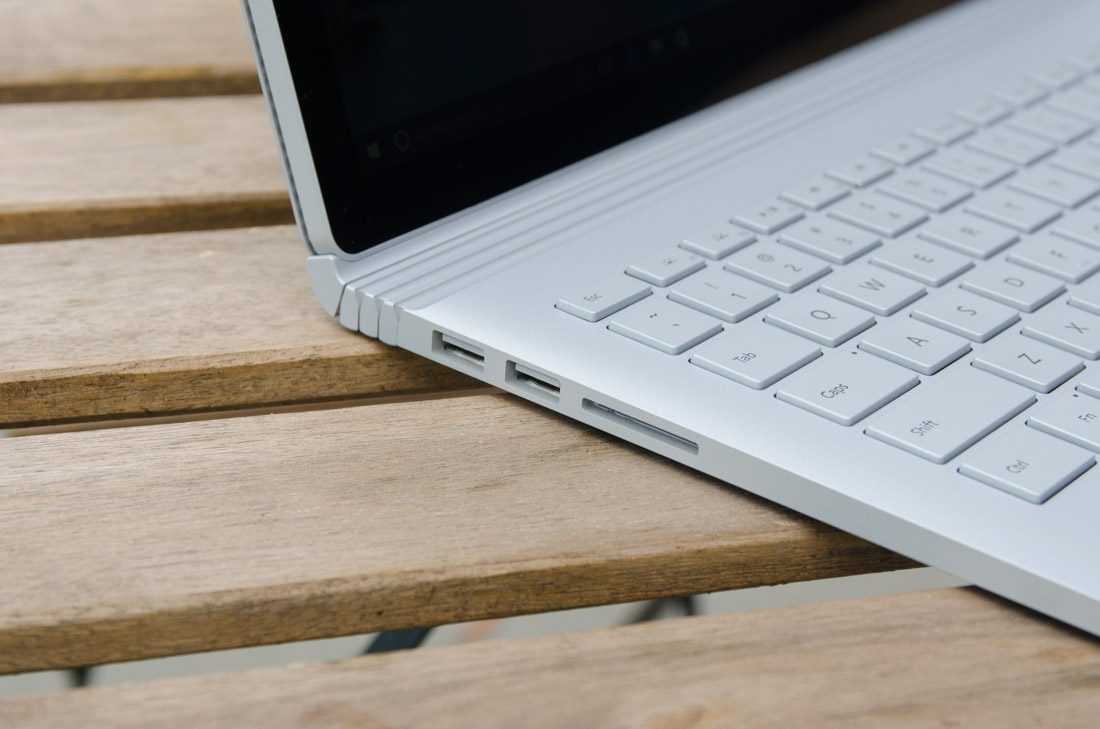The Surface Book is one of the most compelling products Microsoft has released in several years and for the first time in decades, the company's first laptop.
While Microsoft's line of Surface Pro tablets has proven popular among a certain crowd of productivity enthusiasts, they haven't managed to truly replace a laptop for most users. Acknowledging that is the case after three generations of Surface Pros, the company has taken alternate direction in the quest for the perfect hybrid.
The Surface Book is a laptop first and foremost. The device comes with a solid keyboard base, rather than a thin keyboard cover. When the two parts are connected, the Surface Book looks just like a laptop, but at the click of a button the display can be removed and the device used as a free-standing tablet.
As Microsoft hopes that the Surface Book will finally be the hybrid that tempts traditional laptop users, there is no shortage of performance hardware inside. Entry-level models are equipped with an Intel 'Skylake' Core i5 CPU, 8 GB of RAM and 128 GB of fast SSD storage, though you can configure the unit to have a Core i7 CPU, a dedicated Nvidia GPU, 16 GB of memory, and up to 1 TB of SSD space.
The Book also features an incredibly interesting design. The hybrid's 13.5-inch display is fairly standard in terms of diagonal size, but the use of a strange 3:2 aspect ratio makes the device a lot taller than competing products. My Dell XPS 13, for example, uses a 13.3-inch 16:9 display with ultra-thin bezels, and although these displays are of a similar size class, the Surface Book is a lot larger and packs a decent amount more screen real estate.
And then there's the hinge, which is one of the most head-turning features about the Surface Book. As most of the device's internals are found in the display portion of the Book, including a battery that allows it to be used as a tablet, a strong hinge is needed to keep the heavy display from tipping over. Faced with this design challenge, Microsoft came up with this multi-segment hinge that's tough and surprisingly sturdy considering the weight of the tablet.
The downside to this hinge, and I'm sure this will annoy many people, is that the laptop doesn't close fully. When the display is resting on the keyboard base, there is a pen-sized gap near the hinge, which isn't a particularly elegant solution. Functionally there is nothing wrong with having a gap, and it didn't bother me (apart from aesthetics) in my time using the Book, but it certainly would be nicer if the laptop closed properly.
Even though the hinge is tough and built to take the weight of the tablet, there is an unusual weight balance in the Surface Book that's unlike many other laptops. It's clear during use, especially on your lap, that the display is heavier than a typical laptop, and there were some cases where I felt the device might tip over (even though it didn't). The entire product is also reasonably heavy for a 13-inch class laptop at 1.51 kg (3.34 pounds): the excellent XPS 13 is 250 grams lighter, although the 13-inch MacBook Pro is of a similar weight.
Part of the reason why the Surface Book is an above average weight is due to the use of premium materials across all surfaces of this device. The matte-finish magnesium exterior, enclosing the rear of the tablet and the entire keyboard base, both looks and feels superb, giving the Surface Book a premium design that suits its premium price tag. The use of metal across the entire device also helps the hybrid feel tough and dependable, as does the use of glass to protect the touchscreen display.
The tablet portion of the Surface Book is large thanks to the 13.5-inch screen, which makes it pretty difficult to use without holding it in two hands. The tablet is slim - an 8.5mm thin chassis with a powerful Skylake CPU inside is impressive - but without a kickstand included I didn't detach the tablet and use it standalone all that often, aside from watching the occasional video or showing a document to someone else.
All four sides of the Surface Book's tablet include small vents along their entirety, allowing the Skylake CPU and other components to breathe. Compared to less powerful tablets, having so many vents looks strange, but it will be familiar for those who've used a Surface Pro previously. The keyboard dock also includes a vent just below the hinge, which is used to cool the Nvidia GPU found in models with a discrete GPU.
The tablet portion features limited connectivity: there's only a 3.5mm audio jack on the top right edge, along with power and volume buttons on the left side of the top edge. The base features an SD card slot, a mini-Display port, and two USB 3.0 ports, as well as a Surface Connect port that is used to charge the device and connect to the Surface Dock. There is no USB Type-C on the Surface Book, and just two USB ports might be a little limited for some users.
The latching method that secures the tablet to the keyboard is strong and really makes the hybrid feel like a laptop when both are connected. The system includes both latches and magnets, and the tablet won't detach unless you press a button in Windows or on the keyboard. It's not the fastest method of accessing the tablet I've seen, but the way it holds the tablet in place is far stronger and sturdier than other methods I've used.
The Surface Book comes with camera arrays on the front and back of the tablet. The rear camera is a not-completely-terrible 8.0-megapixel sensor, while the front camera is equipped with a depth sensor for Windows Hello.
And you should definitely enable Windows Hello if you get the Surface Book: it's a fast, accurate and very cool way of keeping the device secure. Unlike other facial recognition security systems I've tried, this one just seems to work every time.
While the tablet doesn't come with a kickstand, it is possible to dock it in a reverse position, allowing you to use the keyboard as a stand. There were some times I put the device in this mode to draw on the touchscreen or show others content at a decent hinge angle, and it could be the best mode to use the Surface Book in when wanting to watch videos.







